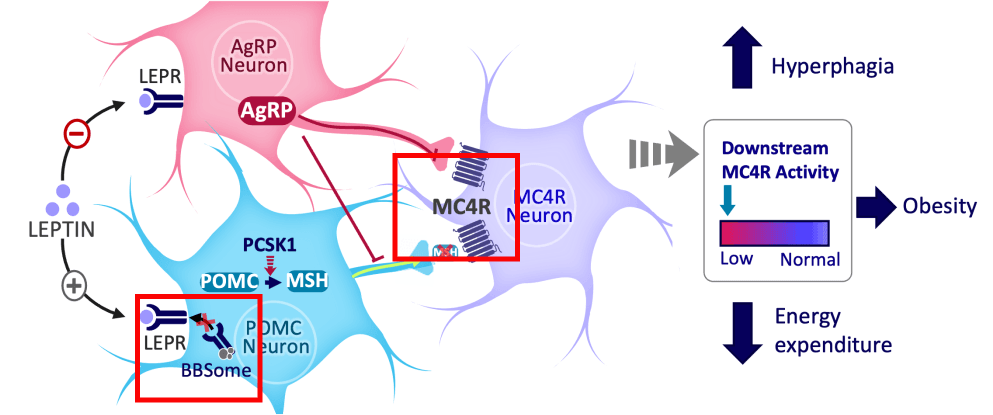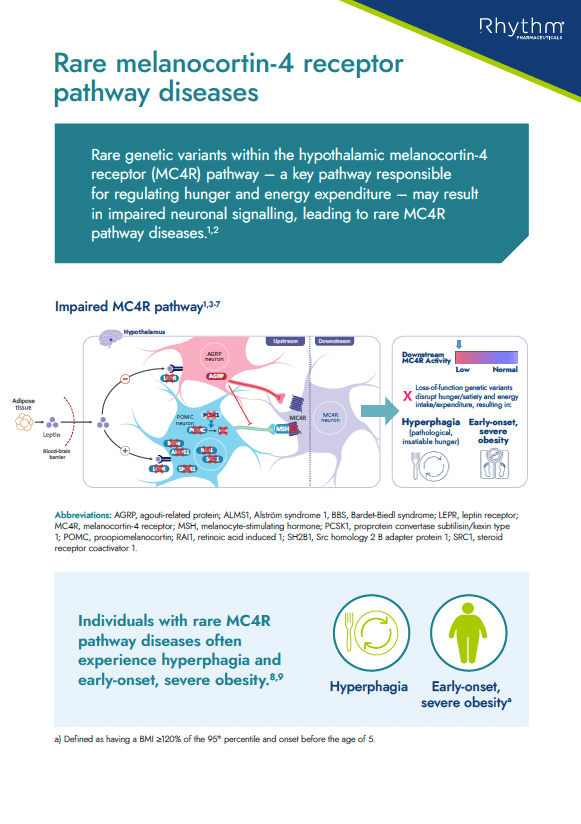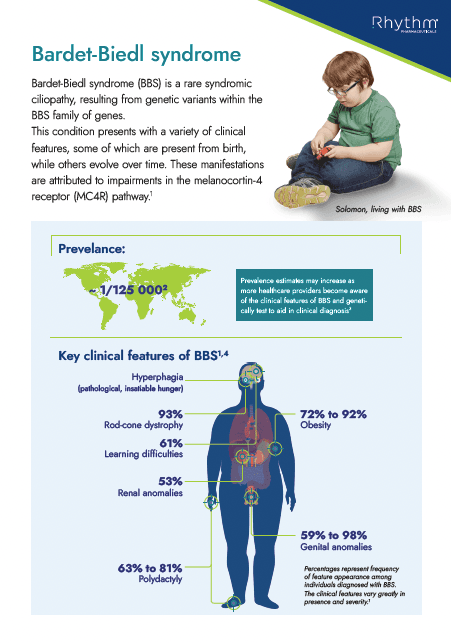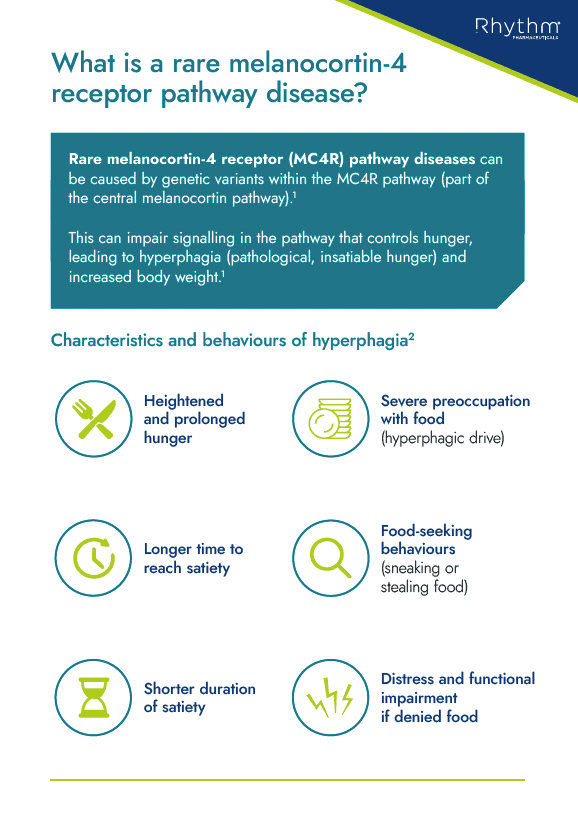CONNECT THE DOTS between rod-cone dystrophy and Bardet-Biedl syndrome
Act now to identify Bardet-Biedl syndrome in your patients, escalate for urgent referral and testing, and help your patients get the support they need.
Early ocular involvement is one of the first and most prevalent manifestations in a rare genetic condition known as Bardet-Biedl syndrome (BBS).1
Abnormalities of the eye in patients with this condition typically arise from early childhood, with retinal rod-cone dystrophy being one of the most common clinical features, affecting over 90% of cases1,2– meaning ophthalmologists play a key role in early identification and diagnosis.
Do you suspect your patient may have BBS? Learn more about the practical next steps you can take to help improve early diagnosis, genetic testing and referrals.


BBS is a rare autosomal recessive multisystem disease caused by defects in genes encoding for proteins that localise to the primary cilium/basal body complex.2 BBS is classified as a rare melanocortin-4 receptor (MC4R) pathway disease which can result, amongst other clinical features, in visual impairments and early-onset, severe obesity from childhood.1,3
Symptoms - Primary and Secondary Features of BBS
Key clinical features:3
Hyperphagia (pathological, insatiable hunger)
Early-onset, severe obesity
Retinal rod-cone dystrophy
Other abnormalities may include:1
Cataracts
Astigmatism
Strabismus
Speech delay
Cognitive impairment
Developmental anomalies
BBS can cause multi system complications for patients, with clinical features affecting the eyes as well as other parts of the body.1
Do you suspect your patient may have BBS? Learn more about the practical next steps you can take to help improve early diagnosis, genetic testing and referrals.

HELP ACHIEVE EARLY DIAGNOSIS AND SPEED UP REFERRAL
BBS imposes a substantial burden on patients and their families due the many complications it can cause. However, major delays still exist in the diagnosis of the condition due to limited awareness of the key clinical features such as retinal disease and rod-cone dystrophy.3,4
Being some of the first healthcare professionals exposed to undiagnosed patients with BBS, ophthalmologists play a vital role in early referral and diagnosis, helping ensure patients have access to the appropriate management and care.
If retinal rod-cone dystrophy is present with any other key clinical features, such as1,4,5
- Hyperphagia
- Early-onset, severe obesity
patients should be immediately referred to a paediatrician or endocrinologist for genetic confirmation.
Interested in knowing more about BBS and hyperphagia?
Learn more here!
Content Hub
Click here to find additional information on BBS and rare MC4R pathway diseases as well as educational resources and meetings produced by Rhythm.
We will continue to update this page with resources about BBS as well as other rare diseases of the MC4R pathway.

Educational information on rare MC4R pathway diseases and how they can lead to hyperphagia and early-onset, severe obesity
Handout

Educational information about Bardet-Biedl syndrome (BBS), its association with obesity, characteristics and route to diagnosis
Handout

Educational information about hyperphagia, including its characteristics and behaviours and its association with rare MC4R pathway diseases
Handout
Referencer:
- 1. Forsyth RL, et al. Bardet-Biedl Syndrome Overview. In: Adam MP, et al. editors. GeneReviews® [Internet]. Seattle (WA): University of Washington, Seattle; 1993–2023.
- 2. Forsythe E, et al. Front Pediat. 2018:6:23.
- 3. Forsythe E, et al. Orphanet J Rare Dis. 2023;18:12.
- 4. Beales PL, et al. J Med Genet. 1999;36:437–46.
- 5. Styne DM, et al. J Clin Endocrinol Metab. 2017;102:709–757.